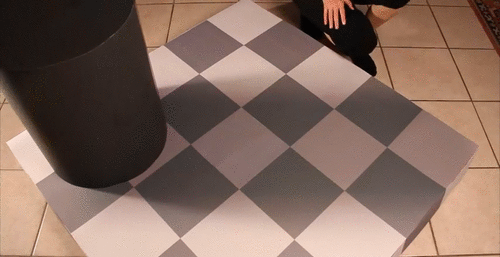Terms
Color: Color is used as an aid to make designs more interesting and dynamic. This can be done by using a few colors at once (with the caution of only a few), combining colors through analogous, complementary, triadic, quadratic or natural combinations, saturating colors to focus attention, and creating a mood through the cultural symbolism of a color.

Highlighting: Highlighting is a way to bring attention to an area of text or within an image. This can be done through the typeface, bolding, italicizing, underlining, use of color, inversing elements, and/or blinking. Highlighting should be used sparingly otherwise, the affect looses power.
Constancy: Constancy is tendency to view objects as unchanged despite changes in sensory input. This includes size, brightness, shape and loudness. Constancy is useful for the brain because it eliminates the constant reinterpretation of a set of objects when seen in different conditions.


Orientation Sensitivity: Orientation Sensitivity is the visual processing of line orientations that is more quickly and easily understood than other line orientations. The minimum recommended difference in line orientation is 30 degrees due to it requiring the less effort to detect. Orientation Sensitivity is based on the oblique effect and the pop-out effect. The oblique effect is the ability to see and judge line orientations that are closer to vertical and horizontal orientations. The pop-out effect is the tendency for elements in different orientations than the rest to pop-out as figure elements and can be easily pinpointed.
Cognitive Dissonance: Cognitive dissonance is when a person’s attitudes, thoughts, and beliefs conflict and create a mental discomfort. People will reduce dissonance by reducing the importance of dissonant cognitions, adding consonant cognitions, or removing or changing dissonant cognitions. Cognitive dissonance also involved incentives. A small incentive will likely increase a person to change their beliefs more so than a large incentive. Cognitive dissonance can be used in successful designs and advertisements to persuade people by challenging their initial believes by encouraging them to invest their time, attention, and participation and then giving a simple way to reduce the dissonance such as buying the product.

Connection of Terms
Each of these terms seems to be connected to cognitive dissonance. Starting with color, it can be used to create conflicting thought by not using the correct color symbolism for the style. This can also be done by highlighting incorrect areas or too much. Also, when the truth of constancy is pointed out, it can create dissonance for a person because it’s different than what they initially believed. Finally, orientation sensitivity is connected to constancy and cognitive dissonance. All of these are associated with optical illusions which can cause dissonance.
